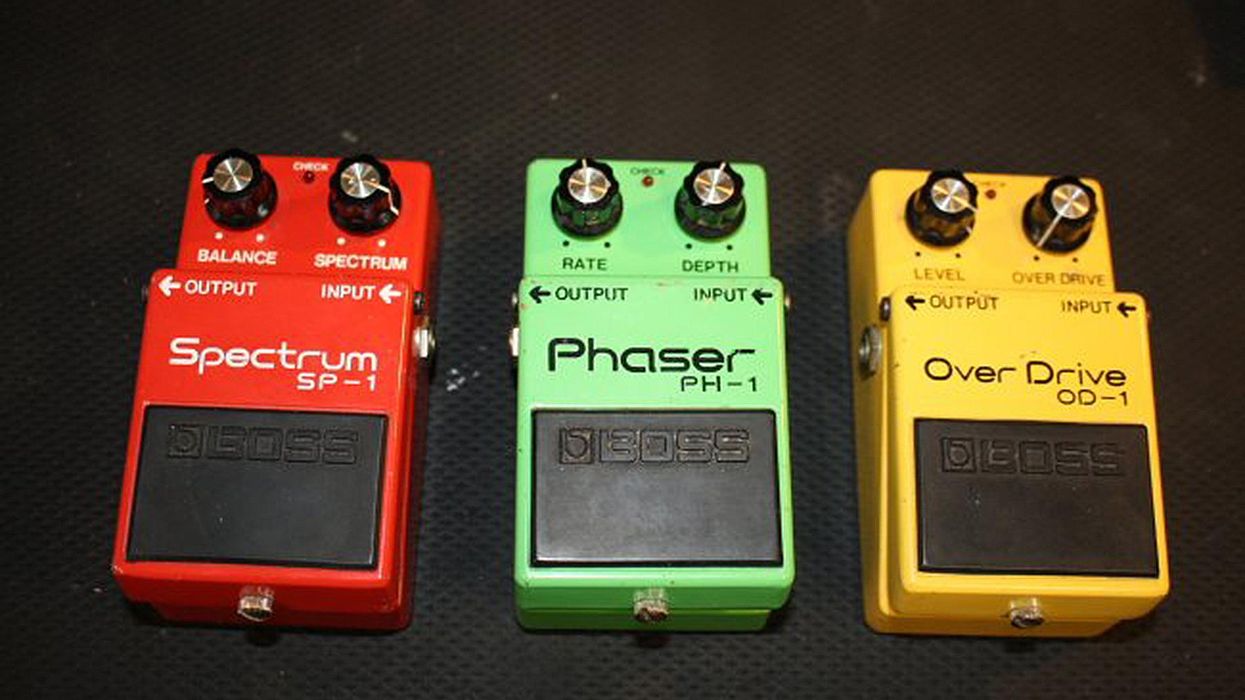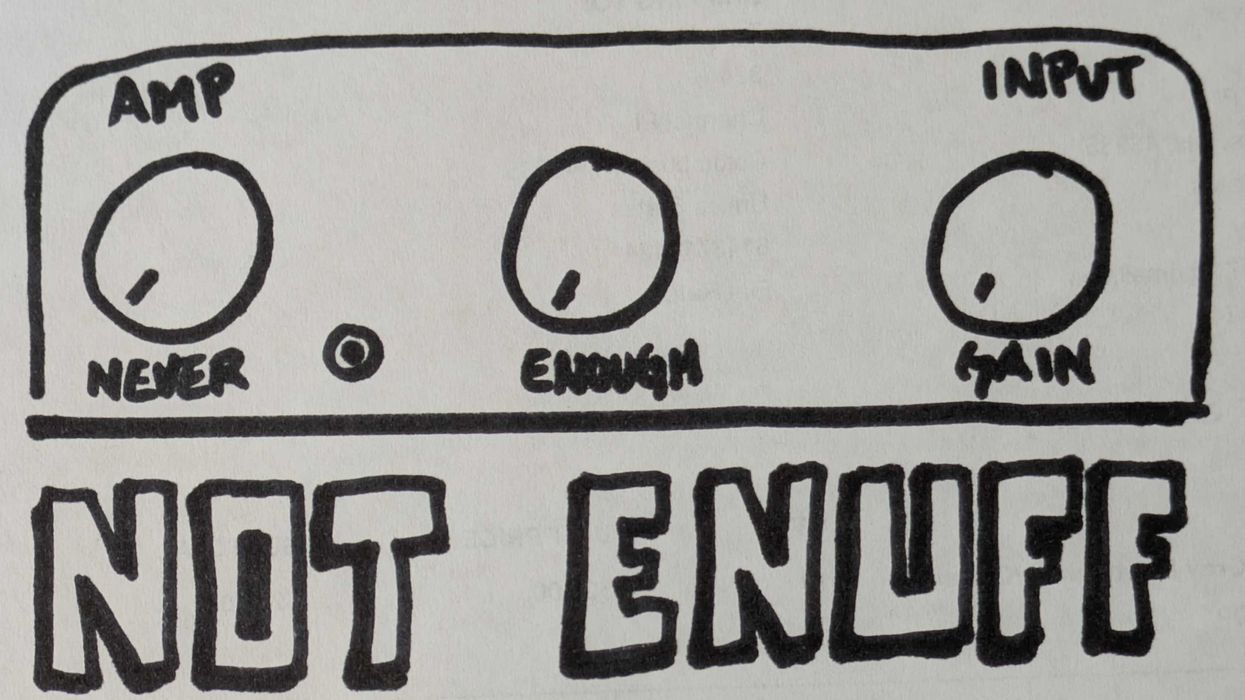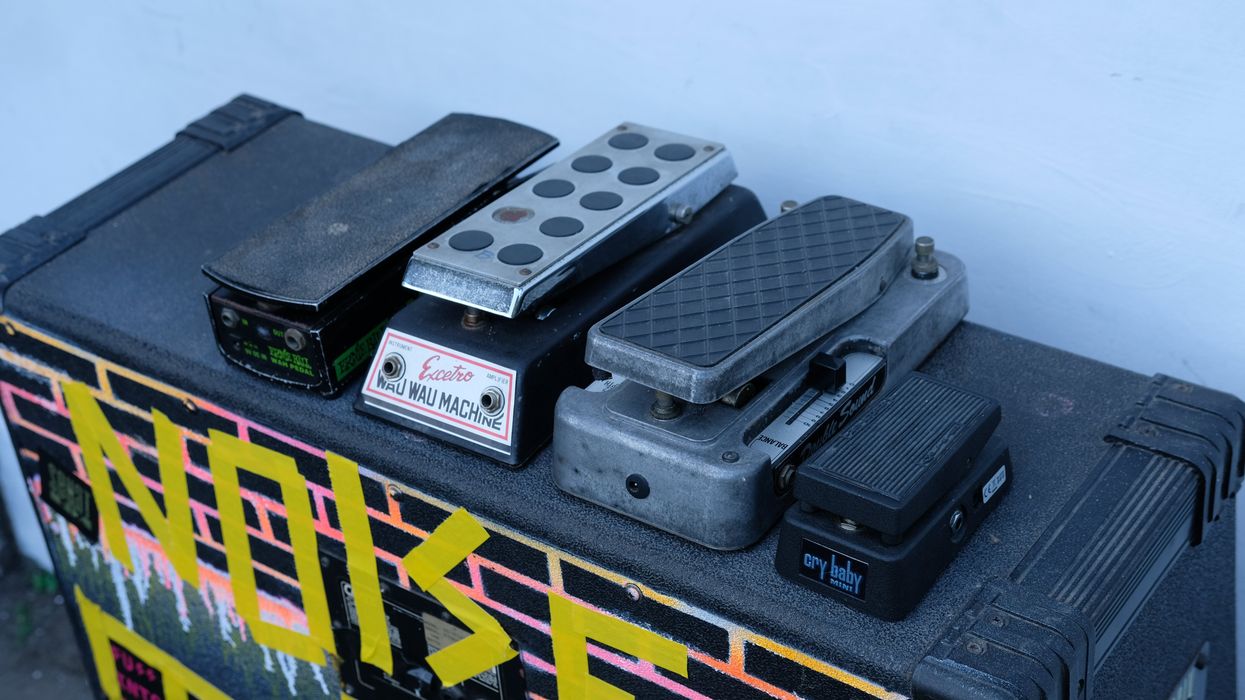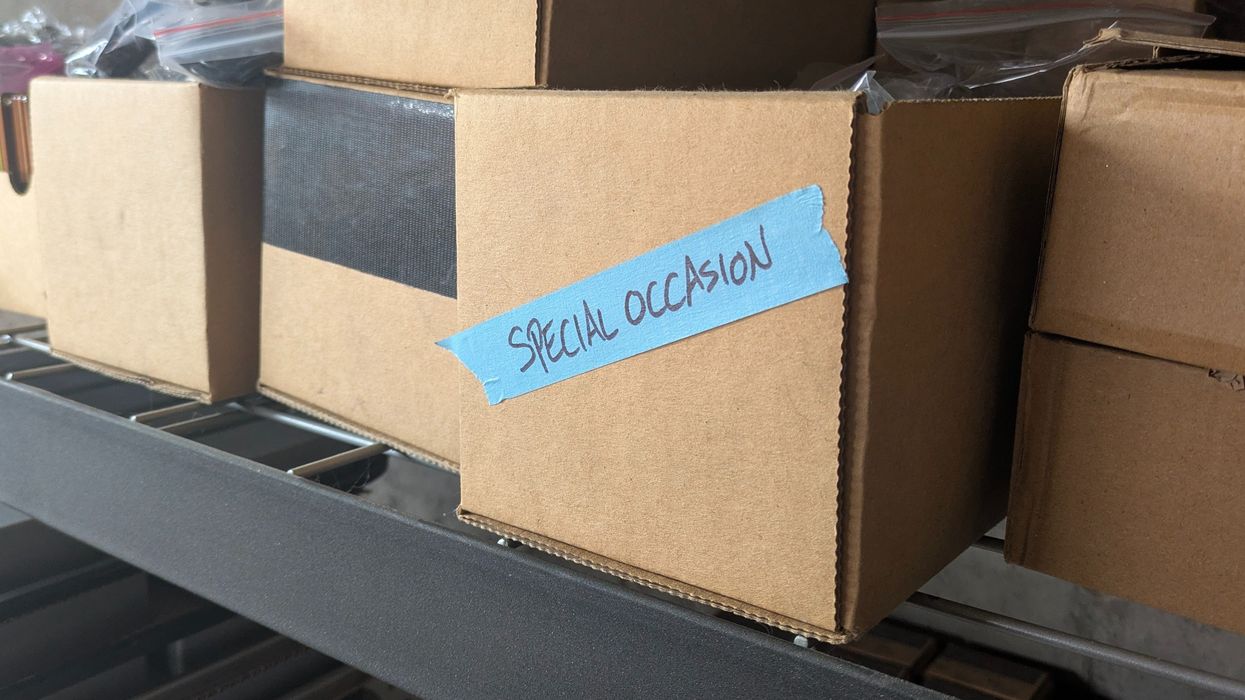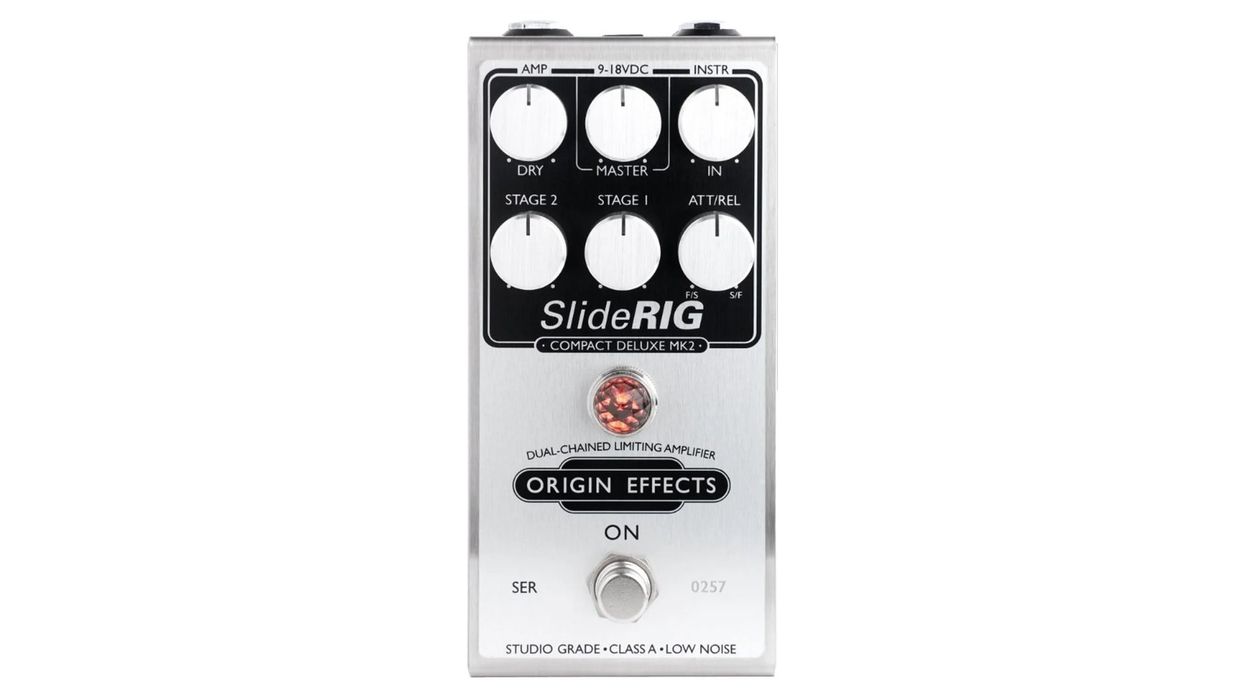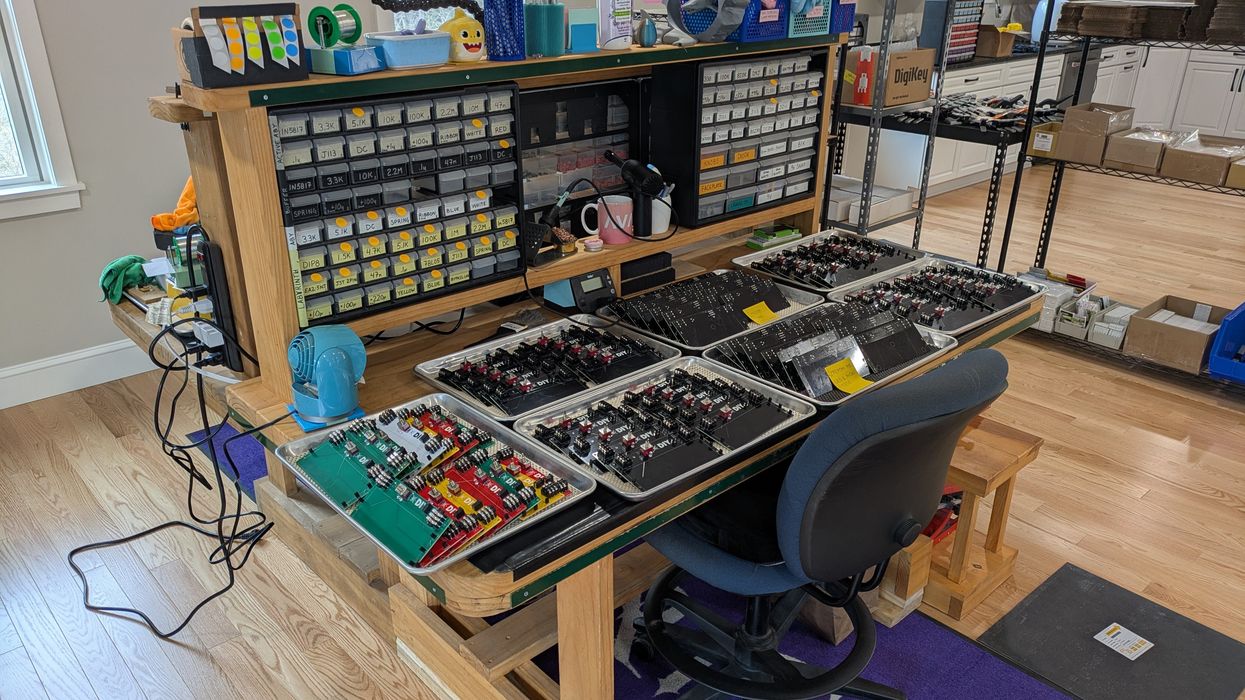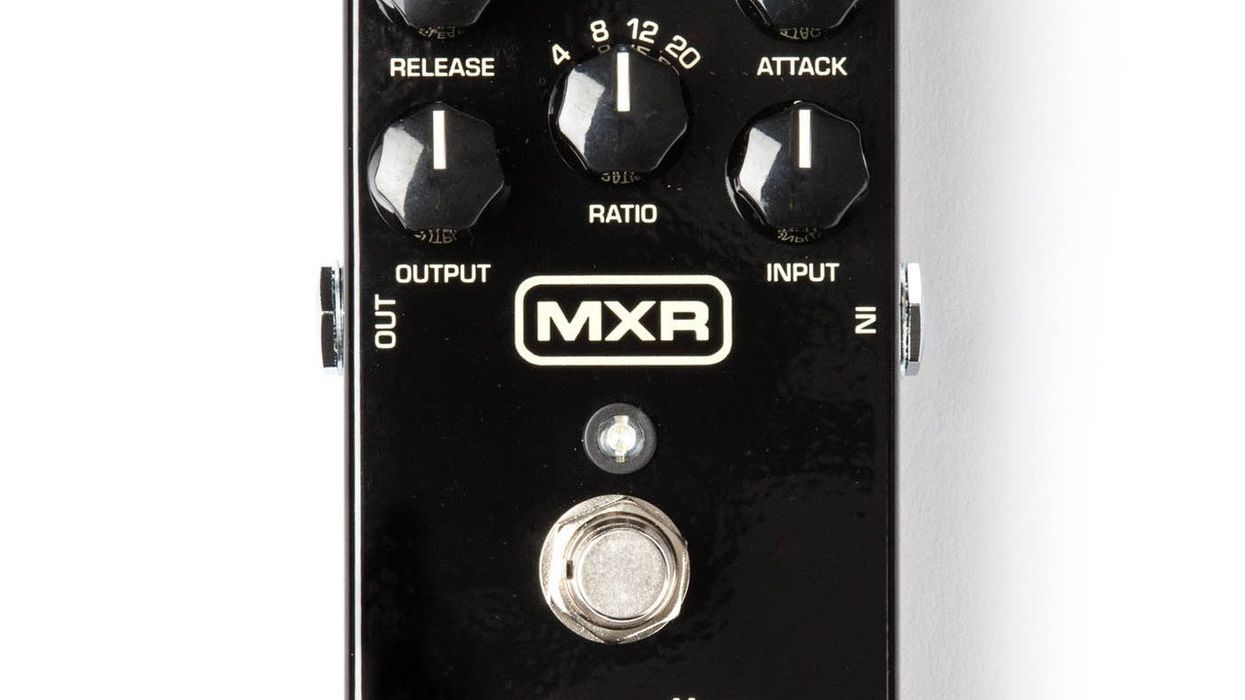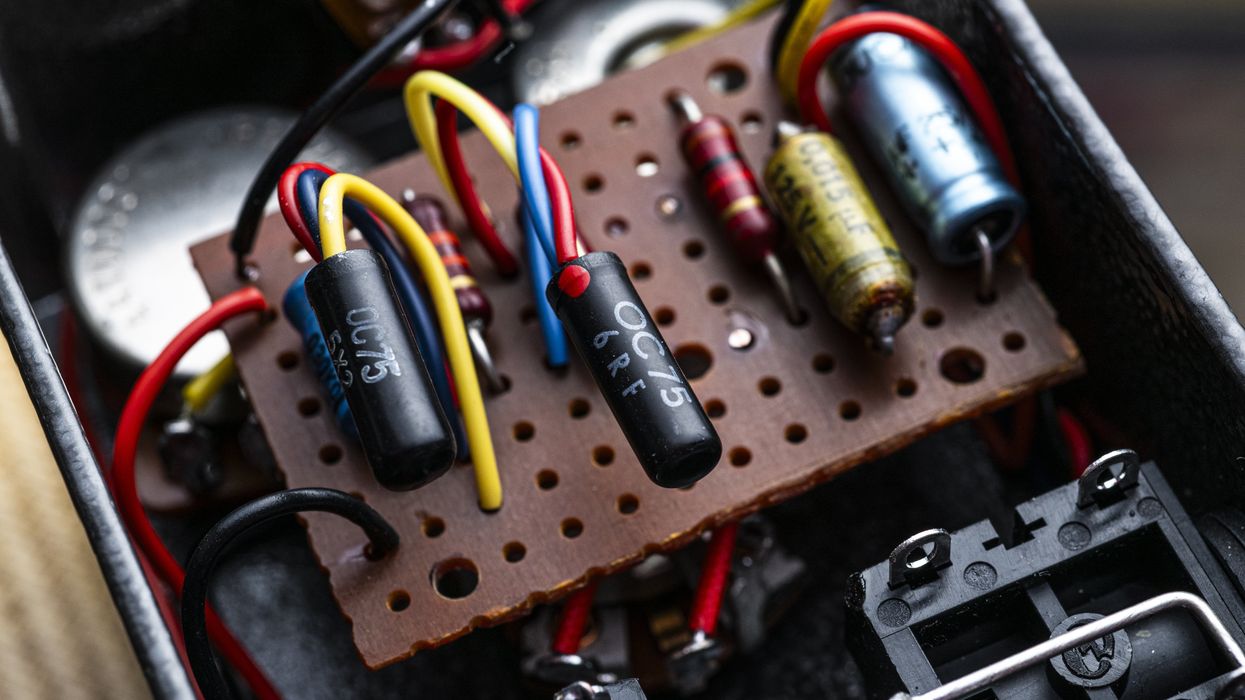Boss pedals, as we most familiarly know them, started being produced in 1978. Prior to that, the pedals began their journey under the Roland moniker, nestled inside massive enclosures that were oozing with style.
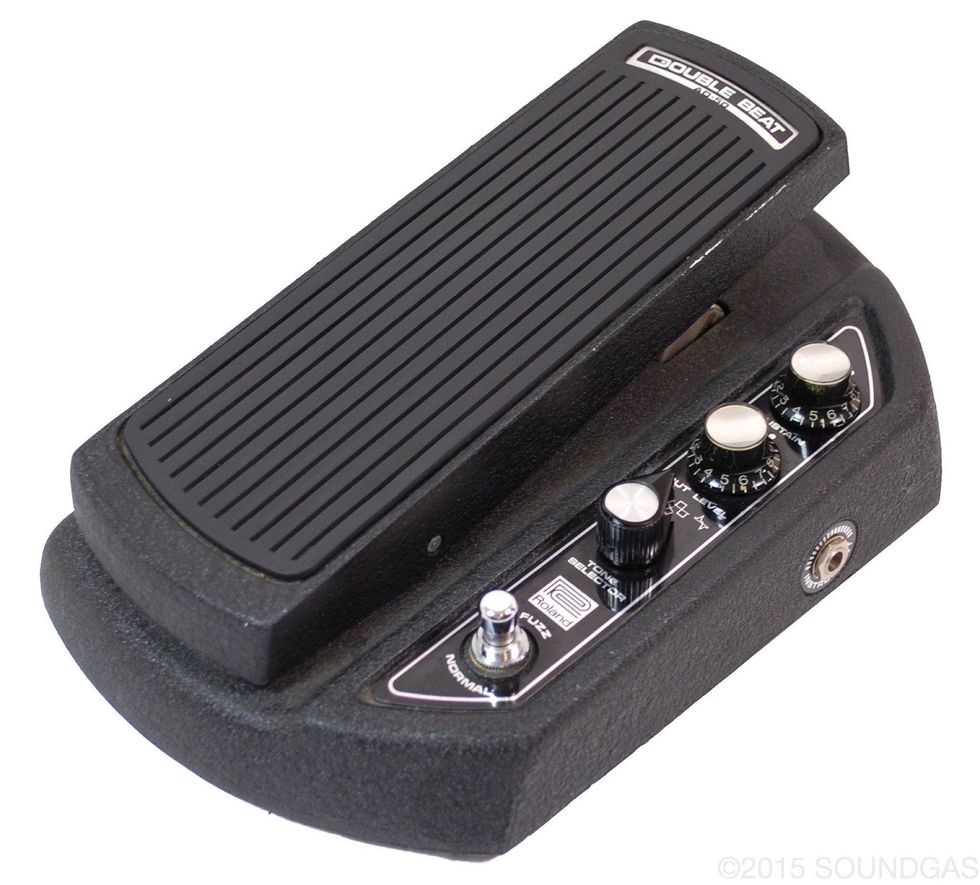
Photo courtesy of Soundgas.com
Shortly thereafter, the first Boss-named pedals arrived—still in big boxes. The Boss CE-1, in particular, became very popular and its sound became a staple of ’80s rock.
By the late ’70s, Boss pedals underwent a massive redesign. The result was the Boss Compact Pedal Series that we all know. The rugged yet stylized design of the enclosures combined with the overall good, solid sounds they produce make these pedals a great value in a small package. Boss pedals could now be powered via wall wart adapters instead of heavy, internal transformers and required much less pedalboard real estate, which made them an instant hit with players.
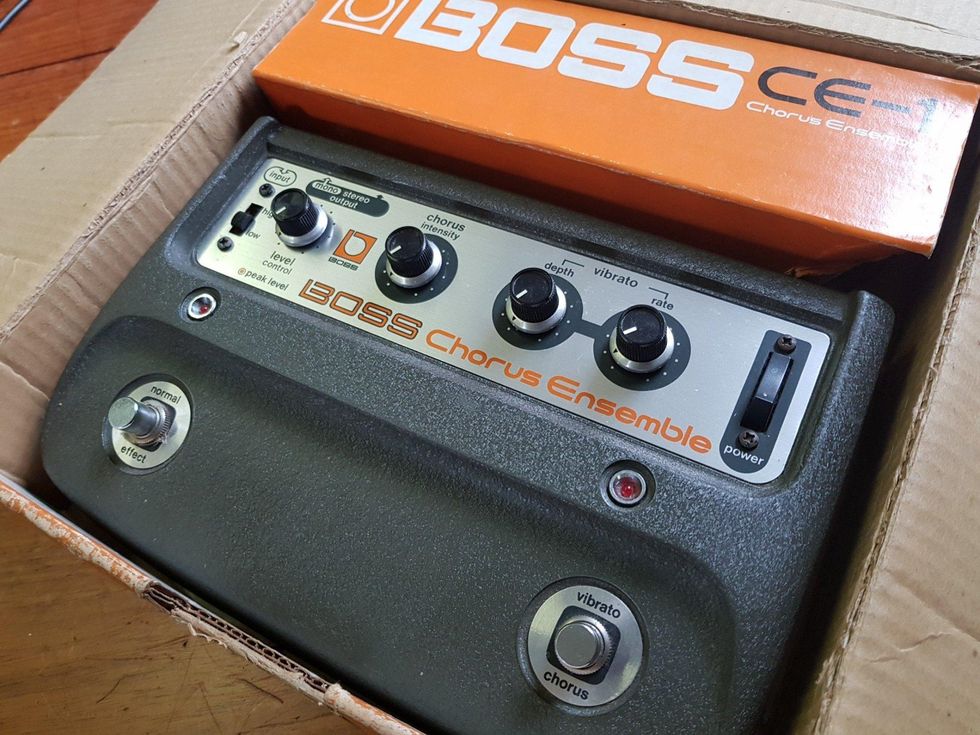
Photo courtesy of Soundgas.com
I adore Boss pedals. I collect anything I can get my hands on that Boss has made over the years. Even if the sound a pedal produces is not for me, I enjoy taking a poke around inside to look at the circuitry and wiring. I’ve had the opportunity to refurbish quite a few and have learned a thing or two about them in the process.
When someone asks me to take a look at a Boss pedal that’s not working correctly, the first thing I ask is, “Can you tell me what power supply you’re using?” I find that in many cases they’re simply not using the appropriate juice to give the pedal what it needs to function properly. While most Boss units do run on the same type of power, there are a few exceptions.
Many of the older Boss pedals don’t use the 9V center-negative power supply that we’ve grown accustomed to as a sort of standard. Several power supplies have been manufactured by Boss over the years. They all have different specifications, and trust me … these things matter! I’ve definitely blown up a beloved Boss pedal or two in my lifetime by accidentally plugging the wrong one in. (Don’t worry! I fixed them.) Some of you might know what that feels like. It’s the worst! Even if the pedal doesn’t ultimately get damaged, under- or over-powering it can prohibit the thing from sounding its best.
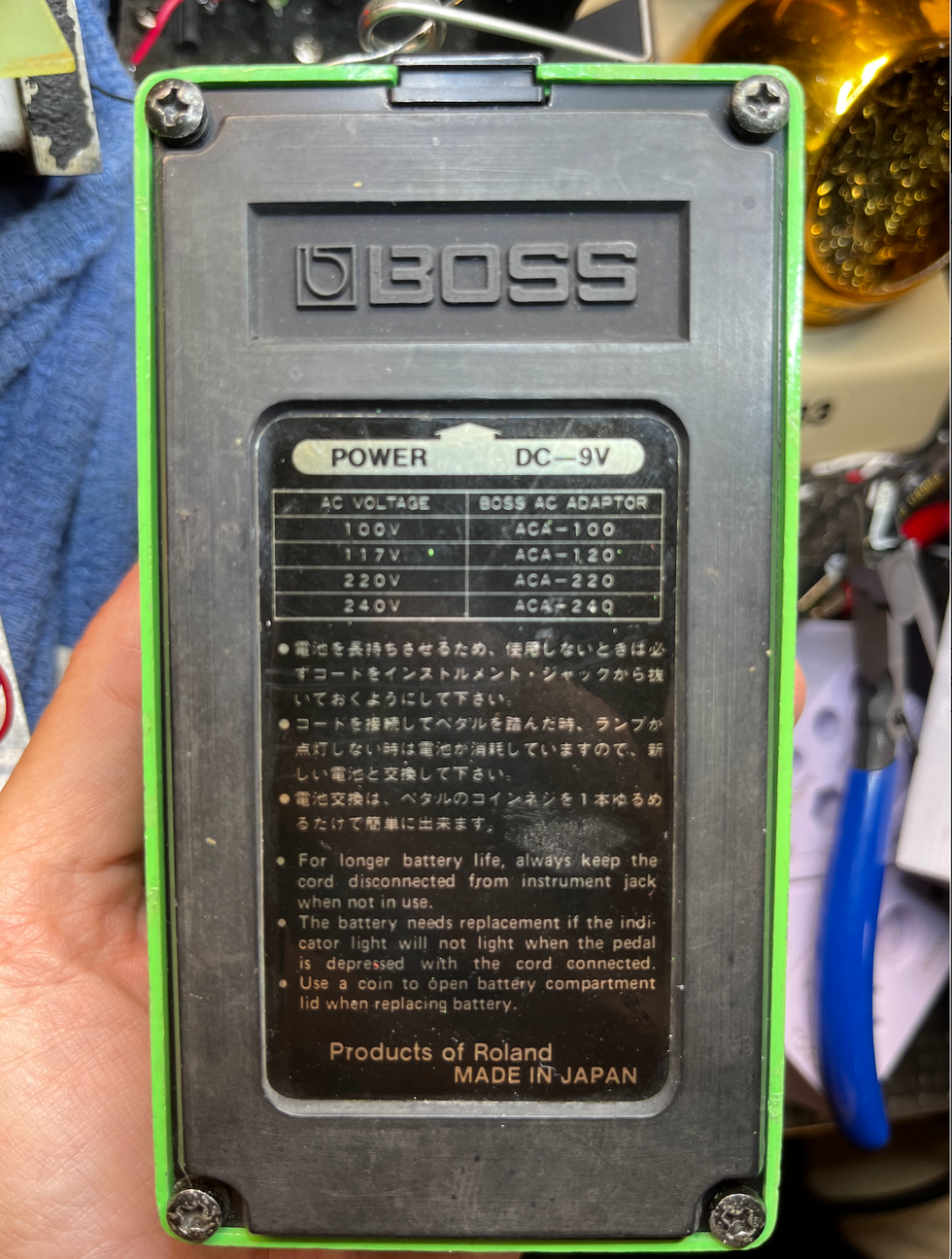
The ideal way to check what power supply you should use with any pedal is, of course, to read the label on the back. Those who collect older Boss pedals know that often, when you buy the pedal used, the label has already been removed.
When someone asks me to take a look at a Boss pedal that’s not working correctly, the first thing I ask is, "Can you tell me what power supply you’re using?"
Stinkfoot.se has a great list of all the Boss pedals and the corresponding adapter the manufacturer suggests should be used for each one. There’s a handy serial number decoder here. In some cases, a particular model’s circuitry will undergo a power section change or two, so an older version needs a different adapter than a newer incarnation. You can date the pedal via the serial number listed in the battery compartment, or, sometimes, on a sticker located near the base of it. Once you know approximately when the pedal was manufactured, it’s much easier to match it to the suggested power requirements for that unit. Also, there is sometimes a tiny label next to where you plug in the power, which identifies which power supply you need.
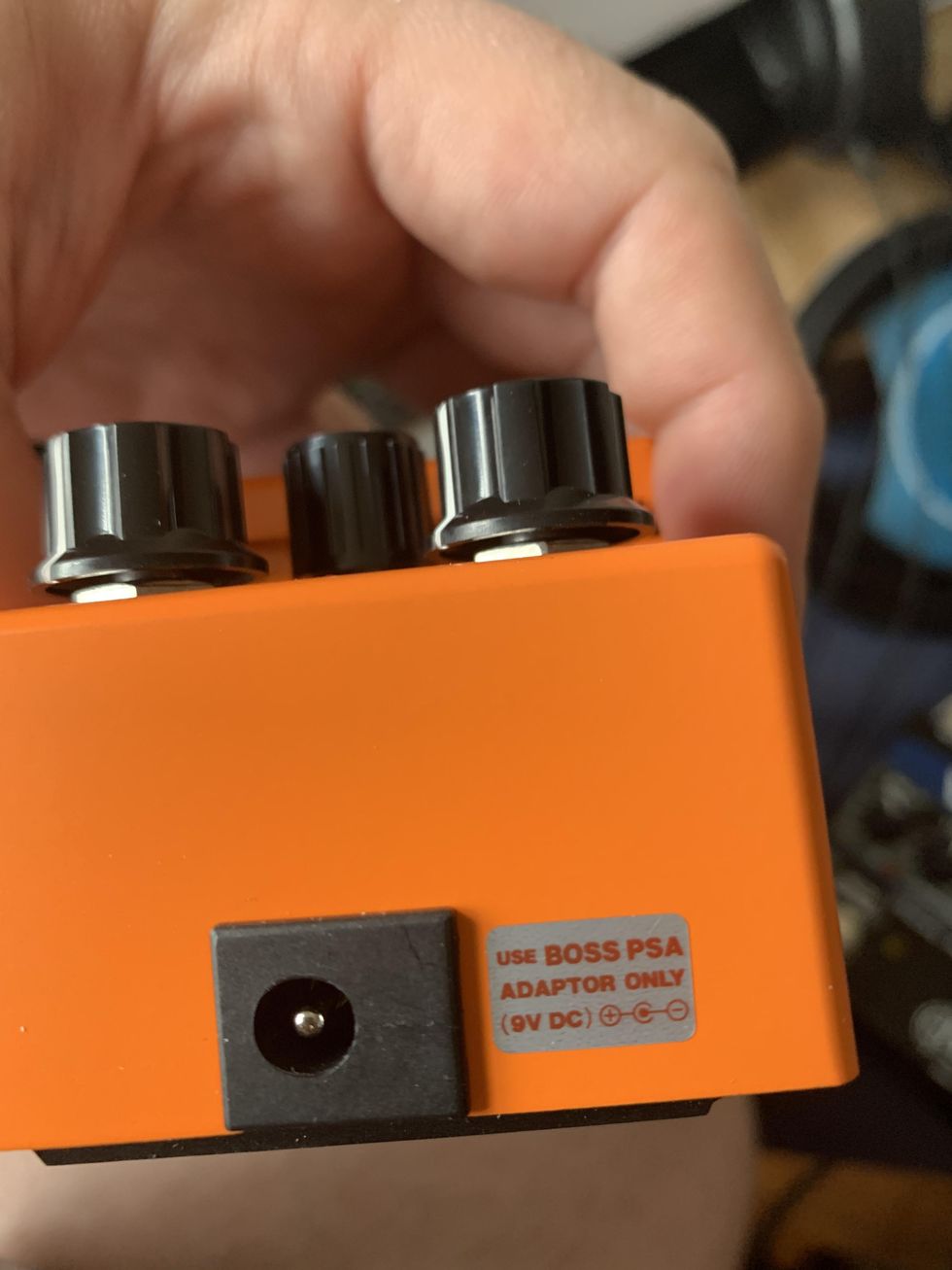
Those who prefer to use multi-power-supply units might have a slightly more difficult time getting all the different power needs for these pedals out of one dedicated unit, although new-generation power supplies are highly flexible.
I would say eight times out of 10, a Boss pedal that would normally come in for repair … doesn’t. I’ll recommend the manufacturer’s suggested power supply for that unit to its owner, who then buys it, and—BOOM—it’s back in business.
For more reading on the history of Boss compact pedals, visit roland.com. It explains the progression of how the company evolved pedal designs over the years and implemented changes in the way the stomps are powered, arguably improving the overall sound quality. To read about Boss adaptors and their design, go to bossarea.com. And if you want to go further down the rabbit hole, check out the mojostompboxes.com blog.
